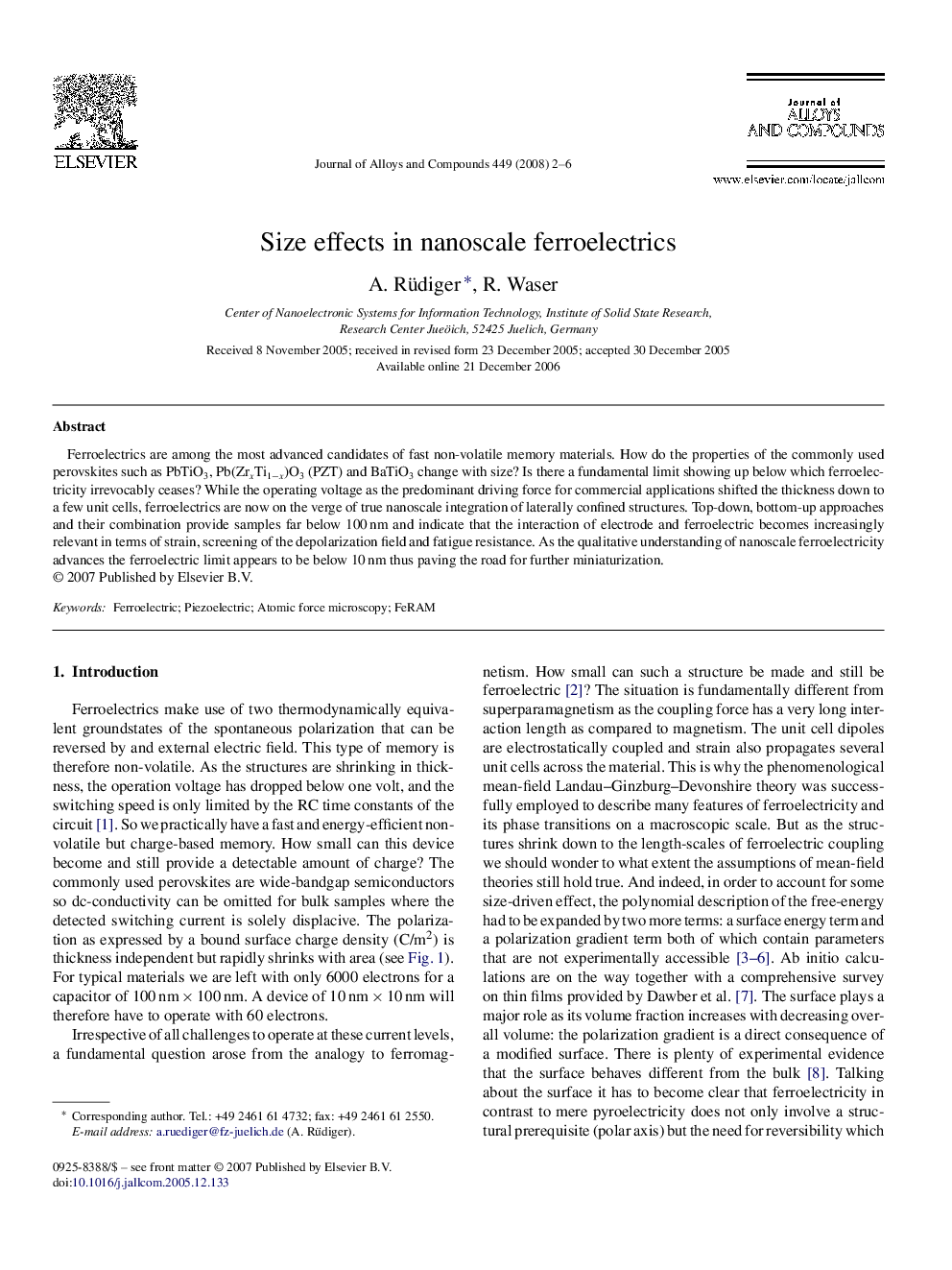| Article ID | Journal | Published Year | Pages | File Type |
|---|---|---|---|---|
| 1625421 | Journal of Alloys and Compounds | 2008 | 5 Pages |
Ferroelectrics are among the most advanced candidates of fast non-volatile memory materials. How do the properties of the commonly used perovskites such as PbTiO3, Pb(ZrxTi1−x)O3 (PZT) and BaTiO3 change with size? Is there a fundamental limit showing up below which ferroelectricity irrevocably ceases? While the operating voltage as the predominant driving force for commercial applications shifted the thickness down to a few unit cells, ferroelectrics are now on the verge of true nanoscale integration of laterally confined structures. Top-down, bottom-up approaches and their combination provide samples far below 100 nm and indicate that the interaction of electrode and ferroelectric becomes increasingly relevant in terms of strain, screening of the depolarization field and fatigue resistance. As the qualitative understanding of nanoscale ferroelectricity advances the ferroelectric limit appears to be below 10 nm thus paving the road for further miniaturization.
